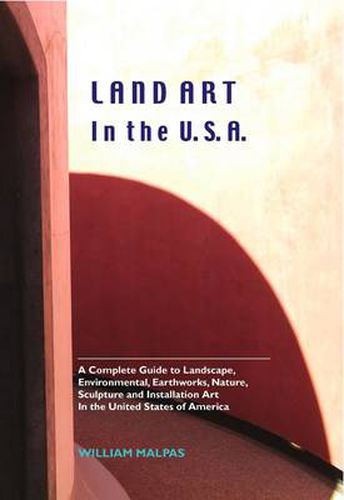Land Art in the U.S.A.
William Malpas

Land Art in the U.S.A.
William Malpas
This title is printed to order. This book may have been self-published. If so, we cannot guarantee the quality of the content. In the main most books will have gone through the editing process however some may not. We therefore suggest that you be aware of this before ordering this book. If in doubt check either the author or publisher’s details as we are unable to accept any returns unless they are faulty. Please contact us if you have any questions.
LAND ART IN THE U.S.A. A new study of land art in America, featuring all of the well-known land artists from the ‘golden age’ of land art - the 1960s - to the present day.
Fully illustrated, with a bibliography.
EXTRACT FROM THE CHAPTER ON ROBERT SMITHSON
Robert Smithson is the key land artist, the premier artist in the world of land art. And he’s been a big favourite with art critics since the early Seventies. Smithson was the chief mouthpiece of American earth/ site aesthetics, and is probably the most important artist among all land artists.
For Robert Smithson, Carl Andre, Walter de Maria, Michael Heizer, Dennis Oppenheim and Tony Smith were ‘the more compelling artists today, concerned with 'Place’ or ‘Site’‘. Smithson was impressed by Tony Smith’s vision of the mysterious aspects of a dark unfinished road and called Smith 'the agent of endlessness’. Smith’s aesthetic became part of Smithson’s view of art as a complete ‘site’, not simply an aesthetic of sculptural objects. Smithson was not inspired by ancient religious sculpture, by burial mounds, for example, so much as by decayed industrial sites. He visited some in the mid-1960s that were ‘in some way disrupted or pulverized’. He said he was looking for a ‘denaturalization rather than built up scenic beauty’.
Robert Smithson said he was concerned, like many land (and contemporary artists with the thing in itself, not its image, its effect, its critical significance: ‘I am for an art that takes into account the direct effect of the elements as they exist from day to day apart from representation’. Smithson’s theory of the ‘non-site’ was based on ‘absence, a very ponderous, weighty absence’. Smithson proposed a theory of a dialectic between absence and presence, in which the ‘non-site’ and ‘site’ are both interacting. In the ‘non-site’ work, presence and absence are there simultaneously. ‘The land or ground from the Site is placed in the art (Non-Site) rather than the art is placed on the ground. The Non-Site is a container within another container - the room’.
William Malpas has written books on Richard Long and land art, as well as three books on Andy Goldsworthy, including the forthcoming Andy Goldsworthy In America. Malpas’s books on Richard Long and Andy Goldsworthy are the only full-length studies of these artists available.
This item is not currently in-stock. It can be ordered online and is expected to ship in 7-14 days
Our stock data is updated periodically, and availability may change throughout the day for in-demand items. Please call the relevant shop for the most current stock information. Prices are subject to change without notice.
Sign in or become a Readings Member to add this title to a wishlist.

